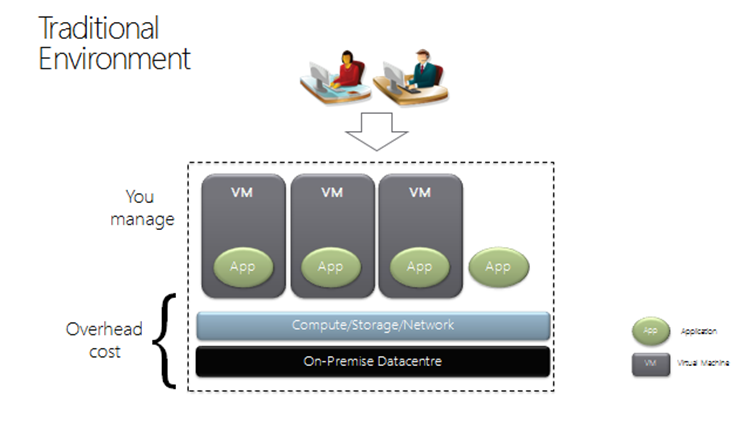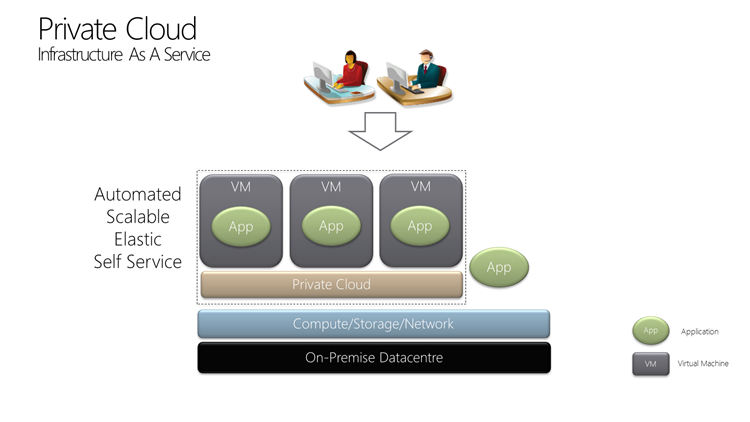Cloud computing - Delivering IT as a service
The role of any IT department in an organisation is to deliver business value through information technology. This distils down to delivering a set of applications to the business users to enable them to do their roles more efficiently. Anything outside of the application is inherently overhead, whether that is datacentres, networks or us as IT professionals. So IT departments continually strive to be more efficient through process improvement and automation.
In a traditional environment applications would typically be installed onto their own server infrastructure. This was a result of many factors – compatibility issues, ease of support, warranted environments from vendors etc etc. This ultimately led to large numbers of physical servers being deployed into the datacentre. This is obviously inefficient, in fact Gartner recently commented that 85% of datacentre capacity is idle (in UK Government that figure is estimated at over 90%). Gartner also estimate that 70% of an IT budget is spent maintaining datacentre operations. So most organisations are spending the majority of their IT budget on something that’s idle most of the time.
Virtualisation to the Rescue
Most IT departments are stemming this ‘server spread’ and are deploying server virtualisation. This removes the dependency between the operating system and the hardware, enabling one physical server to run multiple versions of the operating system in virtual machines (VMs). This undoubtedly drives efficiency through better use of physical infrastructure.
Building a Private Cloud
Virtualisation though is still an IT ‘thing’ – it enables better use of infrastructure and drives down costs but doesn't directly impact the business operations. To move to ‘IT as a service’ we need to add a ‘service’ layer on top of virtualisation. This enables business users to better define and manage their own IT requirements, in essence build a private cloud.
Taking those virtual machines and placing them in a Private Cloud enables automation, elasticity and self service. As an industry we have standardised on the term ‘Infrastructure As A Service’ to describe this capability.
Lets look at this from a business perspective: As the business owner in Contoso I need to setup a new environment to allow multiple departments to collaborate on a new project. Contoso have recently deployed a private cloud across their datacentre and whereas traditionally I would raise a formal request (and wait for it to be actioned by IT) I can now go to the new self-service portal. On the portal I put in my requirements along with my cost centre and the collaboration environment is automatically provisioned and made available to me for the project. In IT terms the VM is automatically created, balanced across my server infrastructure, and is registered with my management suite.
The technology that enables customers to build private clouds is Windows Sever Hyper-V (providing virtualisation) and System Centre (providing the self service & management). See here for more information.
So if a customer wants to take advantage of private cloud today there are three available approaches/options. Firstly Microsoft can offer help and guidance to customers building their own clouds using the technology stack above. Secondly Microsoft has worked with a number of vendors to provide pre-validated private cloud solutions for customers – a private cloud in box (not really one box but you get the idea). This approach has been termed Fast Track and combines Microsoft software, consolidated guidance, validated configurations from OEM partners for compute, network, and storage, as well as value-added software components.
In the next post we will look at Infrastructure and Platform As A Service delivered from the Public Cloud.
Posted by Nick Umney
Follow us on Twitter: @msukinhealth

